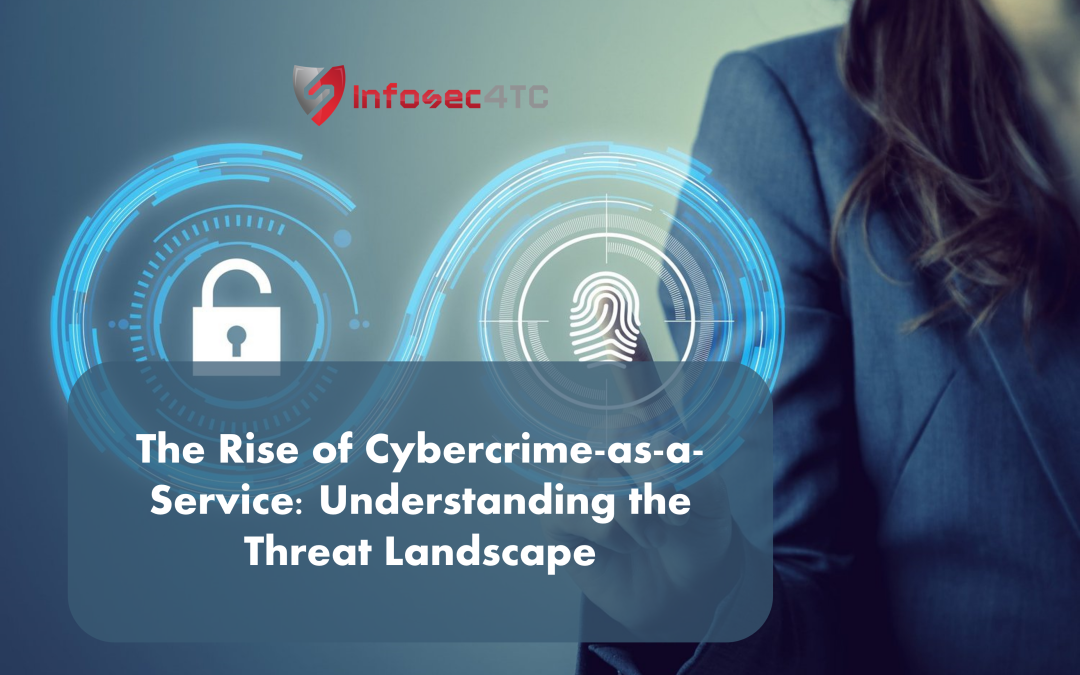Introduction
The digital revolution has not only transformed the way we communicate, conduct business, and access information but also opened up new avenues for criminal activities. With the rapid proliferation of technology, cybercrime has increasingly become a significant concern for governments, businesses, and individuals alike. One of the most alarming trends in this landscape is the rise of Cybercrime-as-a-Service (CaaS). This article will delve into the concept of CaaS, its evolution, and the threats it poses to various stakeholders.
Defining Cybercrime-as-a-Service (CaaS)
Cybercrime-as-a-Service (CaaS) refers to the commercialization of cybercriminal activities, where malicious actors offer services and tools to facilitate cyberattacks for a fee. The CaaS model operates much like any other service industry, with various products, services, and support options available for purchase or rent on underground marketplaces. These offerings range from hacking tools and malware to complete attack packages and even customer support services.
The Evolution of CaaS
The emergence of CaaS can be traced back to the early 2000s, with the proliferation of hacking forums and the development of automated exploit kits. Over the years, the CaaS ecosystem has evolved and expanded, fueled by the growth of dark web marketplaces, the increasing sophistication of cybercriminals, and the rise in demand for illicit services.
The CaaS model has become highly efficient, enabling even non-technical individuals to perpetrate cyberattacks with ease. This democratization of cybercrime has led to a significant increase in the frequency and scope of attacks, posing severe threats to individuals, businesses, and nations alike.
The CaaS Ecosystem
The CaaS ecosystem consists of various players and services that facilitate and enable cybercrime. Some of the key components of the CaaS ecosystem include:
- Malware and Exploit Kits: These tools enable cybercriminals to exploit vulnerabilities in systems and networks, leading to unauthorized access, data theft, or disruption of services.
- Ransomware-as-a-Service (RaaS): RaaS providers offer pre-built ransomware packages, allowing their customers to launch ransomware attacks without the need for advanced technical knowledge.
- Botnets and Distributed Denial-of-Service (DDoS) Attacks: Botnets are networks of compromised devices that can be controlled remotely to launch large-scale DDoS attacks, which overwhelm target systems and render them inoperable.
- Phishing and Social Engineering Services: These services provide cybercriminals with the tools and resources needed to create and distribute convincing phishing campaigns, designed to trick victims into revealing sensitive information or installing malware.
- Money Laundering Services: As cybercriminals accumulate ill-gotten gains, money laundering services help them convert their digital assets into usable currency, making it difficult for law enforcement to trace and recover the funds.
Understanding the Threat Landscape
The rise of CaaS has significantly impacted the global threat landscape, leading to an increase in the scale, complexity, and severity of cyberattacks. Some of the key risks posed by the CaaS model include:
- Lowered Barriers to Entry: The availability of CaaS offerings has enabled even non-technical individuals to engage in cybercrime, leading to a broader and more diverse pool of cybercriminals.
- Increased Attack Volume: With easier access to tools and services, the overall volume of cyberattacks has increased, overwhelming the capabilities of cybersecurity professionals and law enforcement.
- Enhanced Attack Sophistication: The CaaS model has facilitated the sharing of knowledge and tools among cybercriminals, leading to the development of more advanced and targeted attack methods.
- Greater Anonymity: The use of cryptocurrencies and anonymizing technologies in the CaaS ecosystem has made it increasingly difficult for law enforcement agencies to track and apprehend cybercriminals, further emboldening their activities.
- Economic Impact: The financial losses resulting from cybercrime are immense, with businesses and individuals bearing the brunt of these costs. Moreover, the rise of CaaS has led to the growth of a parallel underground economy, diverting resources away from legitimate industries.
- National Security Concerns: The widespread availability of CaaS offerings poses significant risks to national security, as state-sponsored actors and terrorist organizations can leverage these services to conduct espionage, sabotage, or even disrupt critical infrastructure.
Mitigating the CaaS Threat
To combat the growing menace of CaaS, stakeholders must adopt a comprehensive and proactive approach. Some key strategies to mitigate the CaaS threat include:
- Strengthening Cybersecurity Measures: Organizations and individuals must prioritize the implementation of robust cybersecurity measures, such as regular software updates, strong password policies, multi-factor authentication, and employee training on cyber hygiene and threat awareness.
- Collaborative Efforts: Governments, businesses, and cybersecurity professionals must work together to share intelligence, resources, and best practices to effectively counter the CaaS threat. This includes fostering public-private partnerships and international cooperation to facilitate a unified response against cybercrime.
- Legal Frameworks and Law Enforcement: Governments must develop and enforce comprehensive legal frameworks to deter and prosecute cybercriminal activities. Additionally, law enforcement agencies need to invest in training, tools, and resources to effectively investigate and apprehend cybercriminals operating in the CaaS ecosystem.
- Disrupting the CaaS Ecosystem: Identifying and dismantling the infrastructure supporting CaaS activities is critical to limiting their impact. This requires concerted efforts from law enforcement, cybersecurity professionals, and technology companies to target the platforms, payment systems, and communication channels used by cybercriminals.

